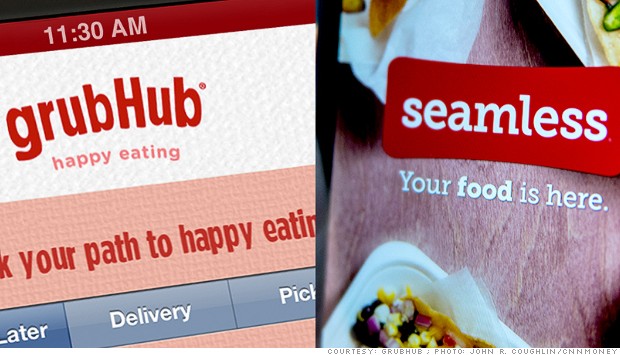

Tech Crunch on Friday reported on rumors that the companies would merge. In October 2011, the company acquired Menupages. Under Zablusky's leadership, Seamless underwent a significant rebrand and changed from SeamlessWeb to Seamless in July 2011. And though both companies have a regional focus, they each have expanded their brand focus into major US cities. GrubHub is based in Chicago and has a more dominant hold on the midwest, while Seamless has a defining grasp on New York, where the company is based. GrubHub purchased the parent company of Campusfood and Allmenus in September 2011.

In five rounds of venture financing, the team acquired $84.1m in investment funding. Maloney co-founded GrubHub with chief operating officer Mike Evans in 2004. Maloney will serve as the new company's CEO, and Seamless chief executive Jonathhan Zabusky will be the company's president. "By combining our complementary restaurant and diner networks, we are well positioned for continued growth in a massive market." "GrubHub and Seamless share a common goal to generate more business for local takeout restaurants while providing the best possible service to diners," said Matt Maloney, the GrubHub co-founder and chief executive, in a statement. No terms of the deal between privately held GrubHub and the public Seamless company were revealed, though Fortune Senior Editor Dan Primack tweeted this morning that “Seamless investors will hold majority stake in combined co w/ GrubHub.In a release, the long-time competitors said the merger presents an opportunity to expand the reach of their services, encourage quicker and more diversified product development and improve growth opportunities. This is a big bite of business: in 2012, the two organizations sent approximately $875 million in gross food sales to local takeout restaurants, resulting in combined revenue well in excess of $100 million, today’s press release indicated. The consolidation might help both vendors overall, with one less mobile ordering service for restaurant owners to have to work with to get customer orders coming in. GrubHub users should benefit from Seamless overall service, which is generally held in higher regard. Seamless users, then, are going to get the better end of the deal right away, with the inclusion of GrubHub’s additional dining options. GrubHub, which is privately owned, features the most restaurants of the two services, claiming 20,000 eateries in their online ordering network, compared to Seamless’ 12,000. If you like using online tools to hunt and gather your food, take note: Seamless and GrubHub, two of the better-known players in the mobile food-delivery business, announced today that they will be merging their services.


 0 kommentar(er)
0 kommentar(er)
